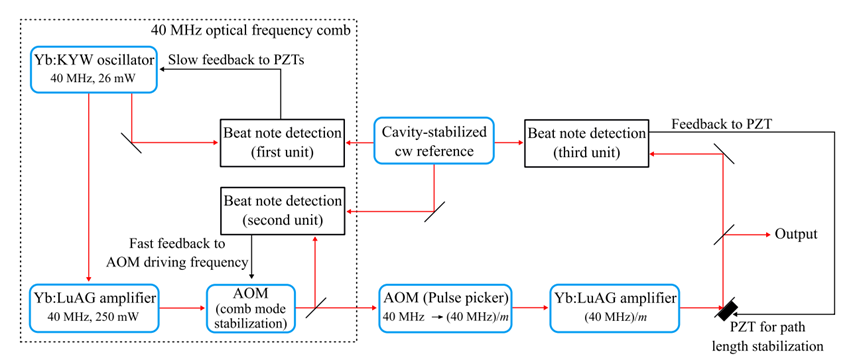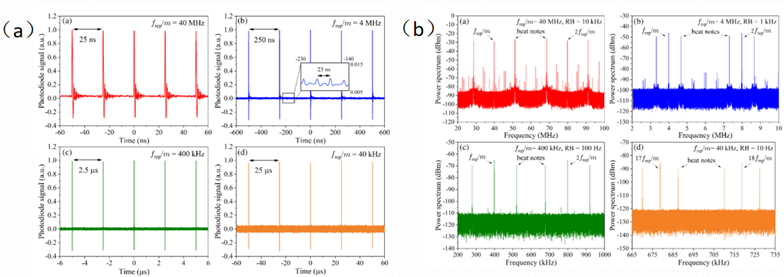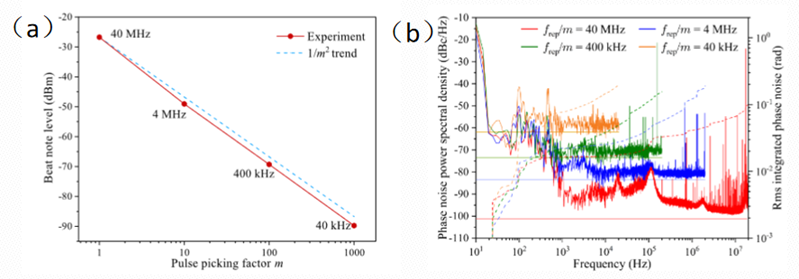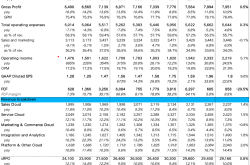Revolutionizing Ultrafast Nonlinear Optical Technology: Low-Repetition-Rate Optical Frequency Combs
![]() 03/31 2025
03/31 2025
![]() 766
766
Optical frequency combs have revolutionized fields such as optical frequency metrology, high-precision laser spectroscopy, and optical frequency standards. Traditionally, solid-state and fiber-based laser oscillators operate within the MHz to GHz repetition rate range. By reducing the repetition rate of optical frequency comb pulses, researchers can significantly enhance pulse energy, facilitate nonlinear frequency conversion, and expand accessible wavelength ranges, enabling precision spectroscopy studies in the extreme ultraviolet (XUV) region. Additionally, this reduction in repetition rate increases spectral density, making it ideal for detecting ultra-narrow linewidth atomic/molecular transitions.
Traditional methods for generating low-repetition-rate, high-pulse-energy ultrafast lasers, such as combining MOPA with CPA schemes, are effective for studying ultrafast phenomena but struggle to maintain a stable, low-noise frequency comb structure. To overcome this, researchers introduced pulse picking technology to traditional mode-locked lasers, ensuring low phase noise. This breakthrough was published in Optica, showcasing the world's first low-noise optical frequency comb system with a repetition rate as low as 40 kHz [1]. This technology boosts pulse energy to 200 nJ and achieves a phase noise of only 19 mrad, providing a groundbreaking tool for advanced fields like XUV spectroscopy and nuclear optical clocks.

Figure 1. Generation of low-repetition-rate frequency combs using an acousto-optic modulator-based pulse picker [1]
The research team theoretically modeled the Gaussian pulse train output from the mode-locked laser, treating the pulse picker as an ideal amplitude modulator. After pulse picking, the spectrum consists of comb modes spaced by the original repetition rate (1/m), where m is the pulse picking factor. The phase noise is distributed across all comb modes, maintaining a constant integrated phase noise, but the original comb linewidth must be narrower than the mode spacing of the new repetition rate. The team employed an acousto-optic modulator (AOM) as the pulse picker, synchronizing the AOM drive signal with the laser repetition rate to generate a uniformly spaced pulse train (Figure 1), validating the theoretical model.
The low-repetition-rate optical frequency comb (Figure 2) comprises a Yb:KYW mode-locked laser, pulse picking technology, and subsequent amplification. The mode-locked laser operates at a 40 MHz repetition rate with an output average power of 26 mW, split into two beams. One beam locks the optical frequency comb modes to an ultra-stable continuous-wave laser reference, feeding back to control the laser cavity length and stabilize the comb teeth modes. The other beam is amplified to 250 mW in the first stage and then enters the AOM. The AOM's first-order diffraction shifts the entire frequency comb down by approximately 110 MHz. Post-AOM, a second beat signal between the frequency comb and the continuous-wave reference laser is obtained, further stabilizing the comb teeth modes. Before entering the second amplifier, the pulses pass through an AOM driven by a 200 MHz carrier frequency, reducing the repetition rate from 40 MHz to 40 kHz. The selected pulses are amplified again, yielding an output average power of 8 mW and a single pulse energy of 200 nJ. Phase noise is measured through a third beat detection unit and compensated using a PZT-driven mirror.

Figure 2. Schematic diagram of the experimental setup [1]
Figure 3 illustrates the time-domain and spectral images of pulses and beat signals at different repetition rates. At a 40 kHz repetition rate, the pulse time-domain interval is 25 μs, with a residual original 40 MHz pulse suppression ratio of 28 dB. The comb structure remains clear at low repetition rates, showing narrow peaks in the beat signal and a signal-to-noise ratio exceeding 30 dB. The linewidth of the beat signal at each repetition rate is limited by the spectrum analyzer's resolution bandwidth.

Figure 3. Experimental results at different repetition rates. (a) Output pulse time-domain traces after the second amplifier, (b) Beat spectra obtained from the third beat detection unit [1]
The research team also measured the relationship between the generated beat signal power and the pulse picking factor m, as shown in Figure 4(a). The dashed line indicates that the experimentally obtained beat signal power is proportional to 1/m² of the 40 MHz corresponding power, confirming the theoretical model's accuracy.

Figure 4. Experimental results at different repetition rates. (a) Beat signal power level as a function of the pulse picking factor m, (b) Phase noise power spectral density (PSD) at different repetition rates [1]
Using GATOR technology, the team processed the data to obtain the phase noise power spectral density (PSD) (Figure 4(b)). The 40 MHz frequency comb exhibits low-frequency phase noise due to environmental vibrations and noise peaks from the feedback loop. At lower repetition rates, the noise floor increases due to reduced carrier power in the beat signal. At 40 kHz, some low-frequency noise structures are 5-10 dB higher, resulting in an approximately 50 mrad increase in root-mean-square (RMS) integrated phase noise. However, the overall phase noise remains within acceptable limits, with an RMS integrated phase noise of 195 mrad at 40 kHz, meeting the requirements for narrow linewidth spectroscopy.
This article successfully demonstrates a low-noise, low-repetition-rate optical frequency comb with an adjustable repetition rate between 40 MHz and 40 kHz. This research not only validates the feasibility of low-repetition-rate optical frequency combs but also paves the way for their application in precision measurements at extreme wavelengths. Future plans include adopting femtosecond-enhanced cavity pulse picking technology to further enhance efficiency and noise suppression.
References:
[1] Francesco Canella, Johannes Weitenberg, Muhammad Thariq, Fabian Schmid, Paras Dwivedi, Gianluca Galzerano, Theodor W. Hänsch, Thomas Udem, and Akira Ozawa, "Low-repetition-rate optical frequency comb," Optica 11, 1-9 (2024).







